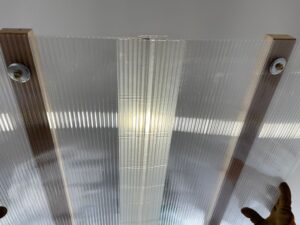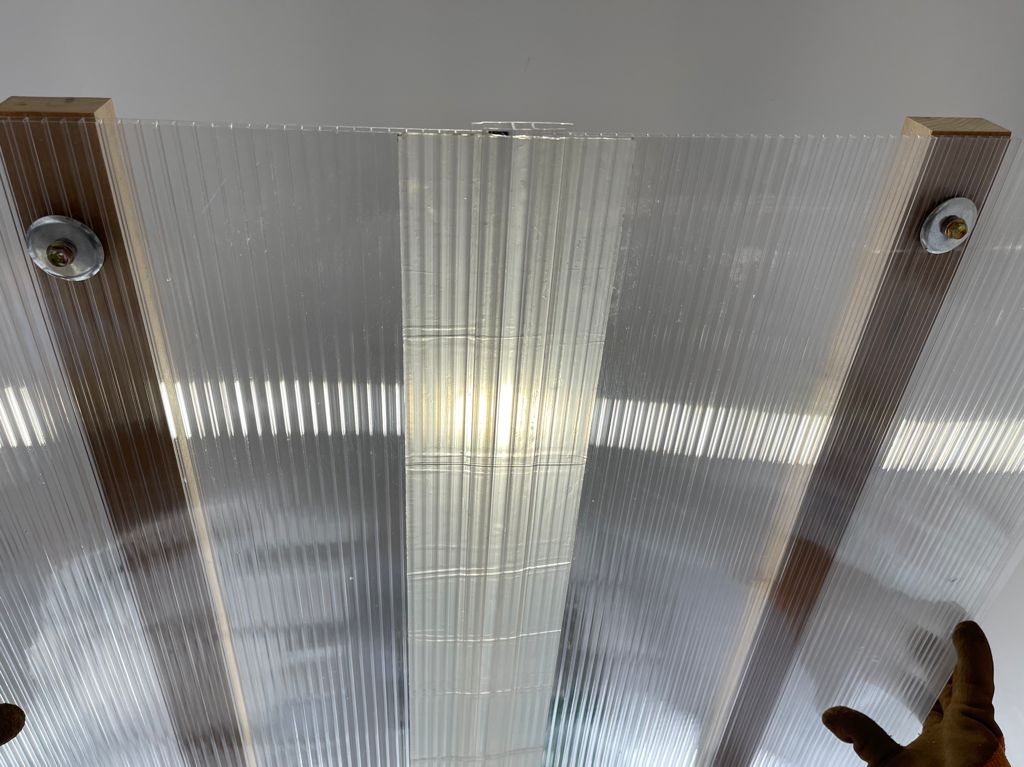 Over the past few years, polycarbonate twin wall sheet suppliers in Canada have been very busy fulfilling large orders for their signature products. These thermoplastic building materials are the perfect replacement for glass. They’re made to mimic the appearance and certain characteristics of glass, but they have a lot more advantages. They can be used for a number of different construction projects. In fact, polycarbonate multi-wall sheets are increasingly becoming the material of choice for greenhouses and other structures.
Over the past few years, polycarbonate twin wall sheet suppliers in Canada have been very busy fulfilling large orders for their signature products. These thermoplastic building materials are the perfect replacement for glass. They’re made to mimic the appearance and certain characteristics of glass, but they have a lot more advantages. They can be used for a number of different construction projects. In fact, polycarbonate multi-wall sheets are increasingly becoming the material of choice for greenhouses and other structures.
Polycarbonate for greenhouses has the following properties:
- It’s incredibly lightweight
- It’s easier to carry and install than glass
- It’s more durable than glass
- It’s scratch-resistant
- It provides even light distribution without overheating the interior of the structure
- It protects against harmful UV rays
- Greenhouse polycarbonate sheets are also 250 times more impact-resistant than glass
- It’s fire-resistant
- It’s easy to clean, sanitize, and maintain
- It’s flexible and can be customized according to the dimensions of your construction project.
If you’re new to the world of polycarbonate multi-wall sheets for greenhouses and other types of structures, then you most likely have a lot of questions about how they work. As one of the leading polycarbonate twin wall sheets distributors in Ontario, we get a lot of questions about our products. Customers often wonder if polycarbonate is the right choice for their projects—particularly greenhouses—over the glass. We don’t mean to sound biased, but we certainly think that our products speak for themselves. Here are some of the most common questions we get about greenhouse polycarbonate sheets and what you need to know about them.
How Do You Choose the Perfect Polycarbonate Multi-Wall Sheets?
When it comes to choosing the ideal building materials for any project, there are a few important factors that you need to take into consideration. Choosing the right polycarbonate multi-wall sheets is no different.
First and foremost, you need to determine the square footage and length of your structure. Once you’ve figured out the dimensions, you’ll know how many sheets are required to cover the exterior.
Seasonal climate changes in your region are also a crucial factor. Polycarbonate multi-wall sheets for greenhouses come in different configurations and thicknesses. Structures in colder climates require more insulation to prevent the freezing temperatures from penetrating the walls.
Standard polycarbonate multi-wall sheets are available in 16 mm thicknesses. These work well for structures such as greenhouses, residential car ports/garages, conservatories, and similar structures. You can also increase the thickness to 25 mm or 35 mm depending on how cold the winters are in your region. The only caveat with polycarbonate multi-wall sheets is that they don’t let in as much natural light as twin wall sheets, which are thinner.
Twin wall sheets are available in a maximum thickness of 10 mm. They’re not as well insulated, but they do let in about 80% natural light as opposed to the 60% offered by polycarbonate multi-wall sheets. Twin wall sheets are perfectly suited for greenhouse structures in warmer climates.
Can Polycarbonate Be Used for Walls?
Yes, polycarbonate can be used for both interior and exterior walls. Polycarbonate multi-wall sheets are energy-efficient and offer excellent insulation for just about any residential, commercial, or industrial structure. You can choose the thickness and level of light distribution based on the specific requirements and purpose of your structure.
Moreover, polycarbonate sheets can also be frosted, tinted, and textured to offer maximum privacy inside greenhouses, homes, car ports, apartment buildings, office buildings, and any other structure for which they’re used. With the addition of various visual features, polycarbonate sheets are the perfect combination of both form and functionality. They can be used to enhance the architectural design of your structure and add a stunning visual appeal with different lighting options.
How Long Do Twin Wall Polycarbonate Sheets Last?
With proper maintenance and cleaning, polycarbonate twin wall sheets can last up to 10 years before needing to be replaced. Longevity is one of the few areas where glass has polycarbonate sheets beat. But the great thing about polycarbonate sheets is that even when they do need to be replaced in the unlikely event of sustaining damages, it’s extremely easy to do.
Polycarbonate sheets are extremely lightweight, especially compared to glass which can take several individuals to lift due to the size. Unlike glass, polycarbonate sheets can usually be removed, lifted, and replaced by one person. Furthermore, polycarbonate sheets can be cut down to size or reshaped on the spot without having to use any special instruments other than a circular saw or jigsaw.
Although polycarbonate sheets need to be ordered from a polycarbonate sheet supplier, they typically include special care instructions that can help extend the lifespan of the material.
How Do You Install Twin Wall Polycarbonate Sheets?
The installation process for twin wall polycarbonate sheets typically depends on the actual application. Polycarbonate sheets can be used for windows, skylights, greenhouse walls, roofs, and even as sneeze guards and dividers in public spaces. The possibilities are endless with this extremely versatile building material.
Generally speaking, though, installing twin wall polycarbonate sheets for interior or exterior structural walls is fairly simple. Polycarbonate sheets can be cut to fit the exact dimensions of your structure.
When installing polycarbonate sheets for greenhouses, it’s important to start with the right hardware. Measure the sheets and the spaces where they’ll be installed. Be sure to leave 1/8” of space for thermal expansion before cutting the sheets down to size. Use compressed air to blow off any residual dust so it doesn’t get stuck on.
Secure the sheets in place with screws that have neoprene-bonded washers. For multi-wall polycarbonate, it’s best to use 1” washers whereas corrugated polycarbonate requires 1/2” washers. To allow for sufficient drilling expansion, leave about a 1/2” of space between the edge of the sheet and the hole. Don’t tighten the screw all the way in. Make sure each sheet is secured in place with no gaps in between. Seal the gaps between the sheets with an industrial sealant to prevent air pockets, insects, dust, and other elements from getting in.
Polycarbonate Twin Wall Sheet Suppliers in the GTA
Canada Plastics & Belting Inc. has a large inventory of twin and multi-wall polycarbonate sheets for greenhouses and other types of structures. Contact us today to learn about our products or visit our showroom.

